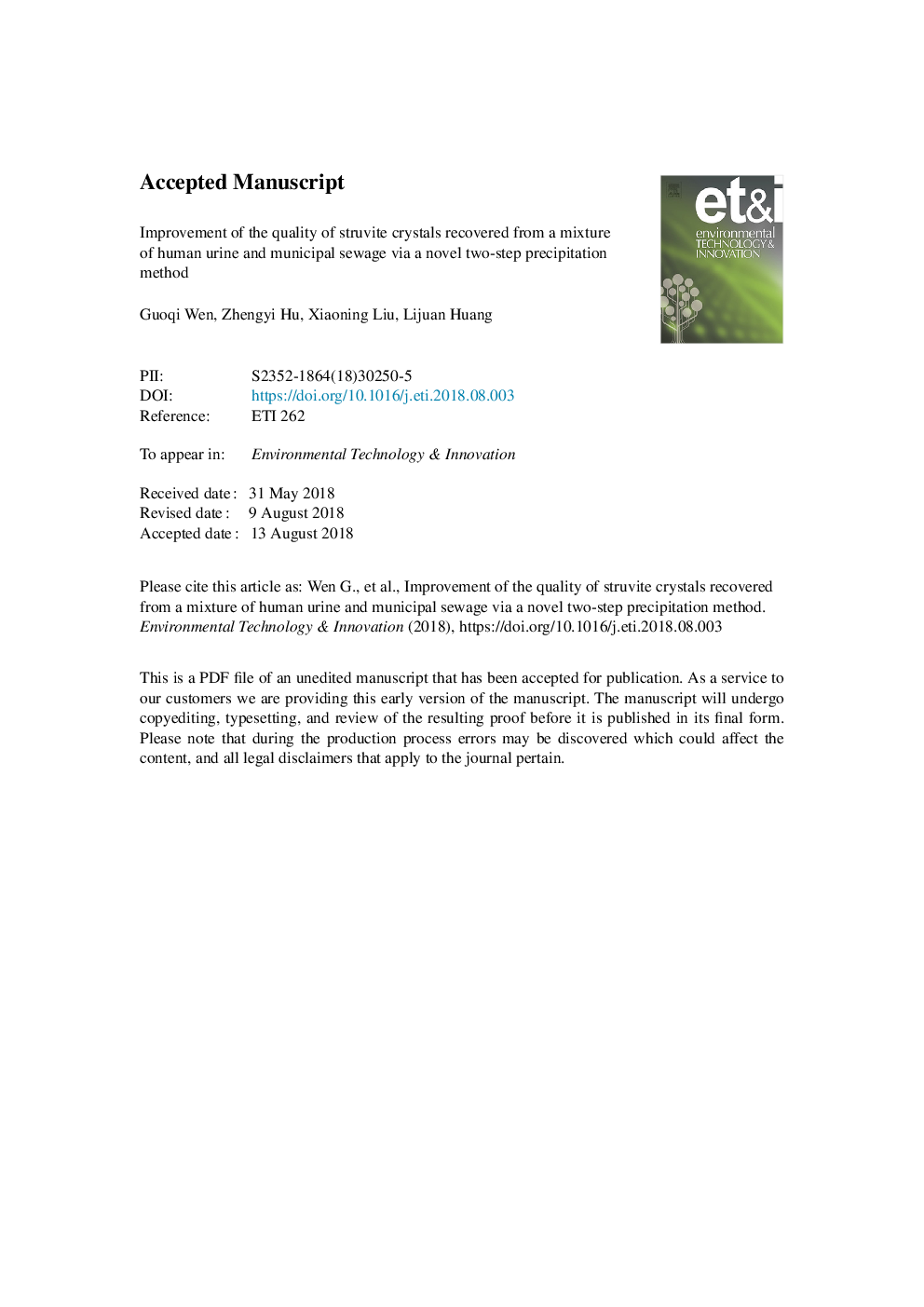| Article ID | Journal | Published Year | Pages | File Type |
|---|---|---|---|---|
| 8857877 | Environmental Technology & Innovation | 2018 | 37 Pages |
Abstract
Struvite recovered from waste streams has significant value as a sustainable slow-release fertilizer for agriculture production. However, there are two limiting factors for the large-scale use of struvite: the cost of magnesium (Mg) sources and the heavy metals in recovered struvite. In our study, laboratory experiments were conducted to investigate the feasibility of recovering phosphorus (P) from a mixture of hydrolyzed urine and municipal sewage without adding Mg salts. Additionally, a novel two-step struvite precipitation method was used to improve struvite quality. Results showed that 92.52% of the PO43â-P in the mixture was recovered when volumetric ratio of urine to municipal sewage (VRUS) was 0.2, stirring speed was 180 rpm, and hydraulic retention time was 30 min. For the novel precipitation method, metal ions were removed during the first-step pre-precipitation procedure at VRUS of 0.05 and the P was recovered in the second-step struvite precipitation procedure at a VRUS of 0.2. The concentrations of cadmium, chromium, lead, and mercury in recovered struvite were below the regulatory limit for mineral P fertilizer in China (GB/T 23349-2009). This means that the recovered struvite can be used in agricultural production. Therefore, the proposed novel two-step precipitation method is a feasible, economical, and promising approach for recovering high-quality struvite from a mixture of urine and municipal sewage without the addition of Mg compounds.
Related Topics
Life Sciences
Environmental Science
Environmental Chemistry
Authors
Guoqi Wen, Zhengyi Hu, Xiaoning Liu, Lijuan Huang,
